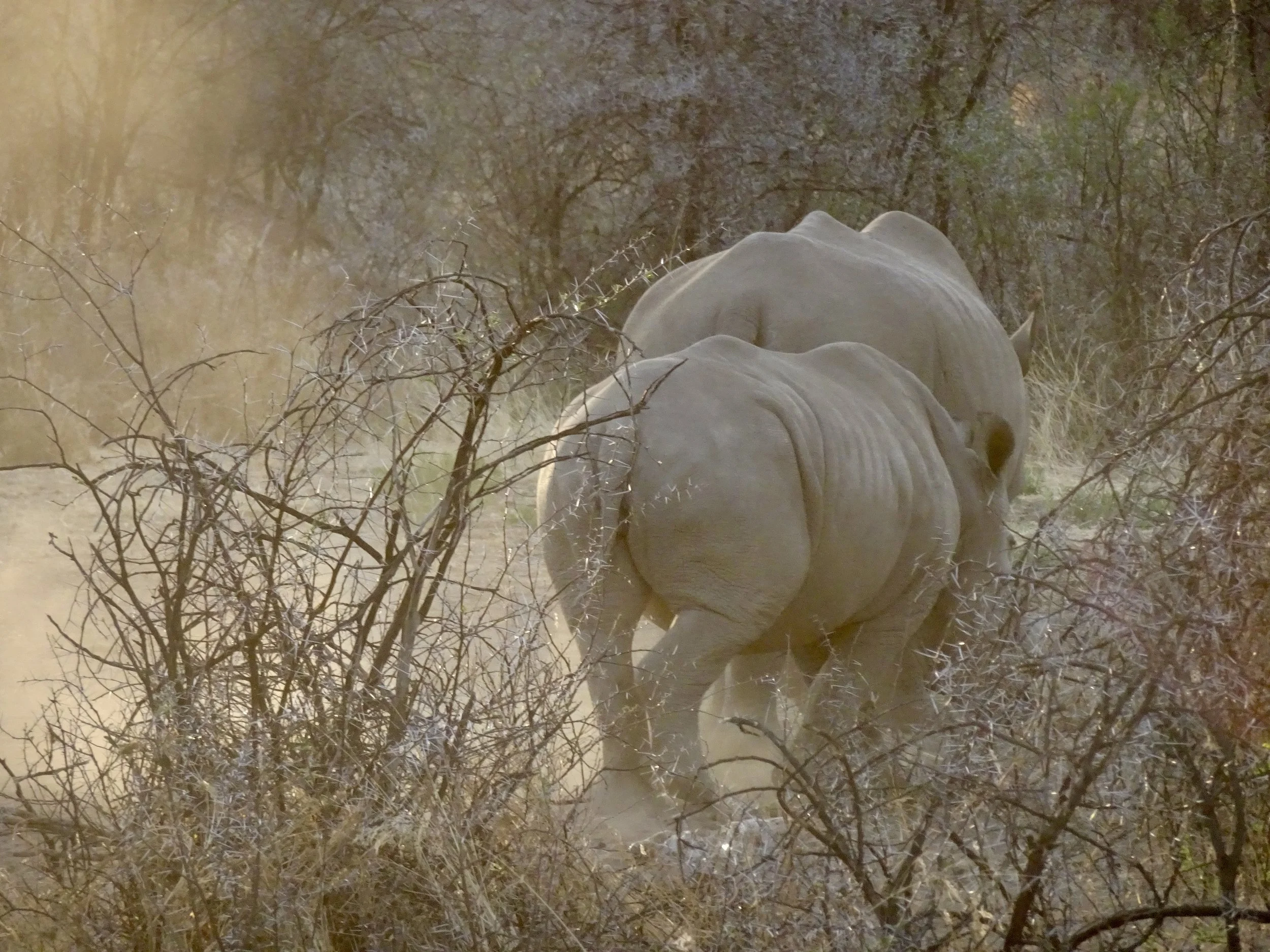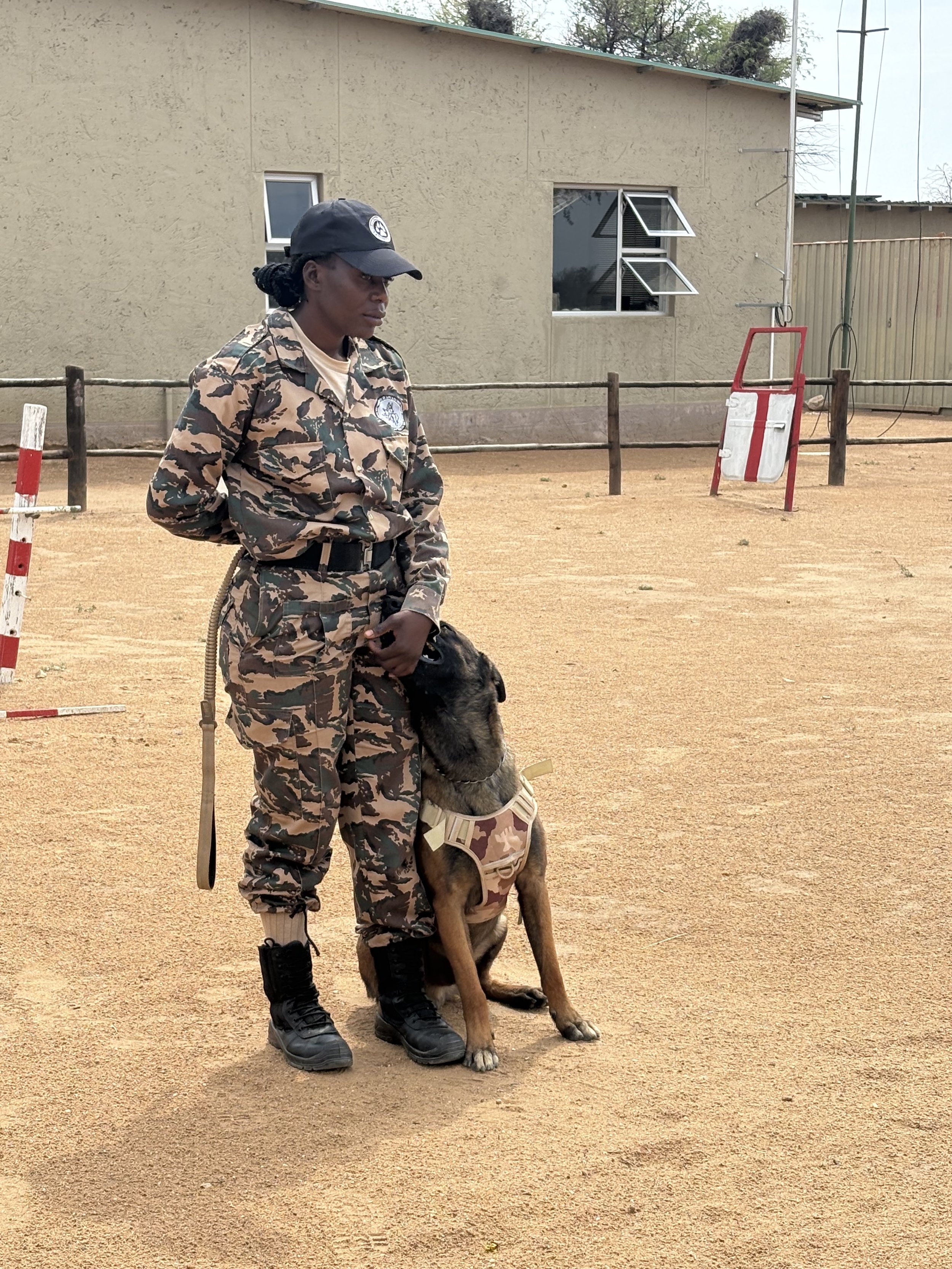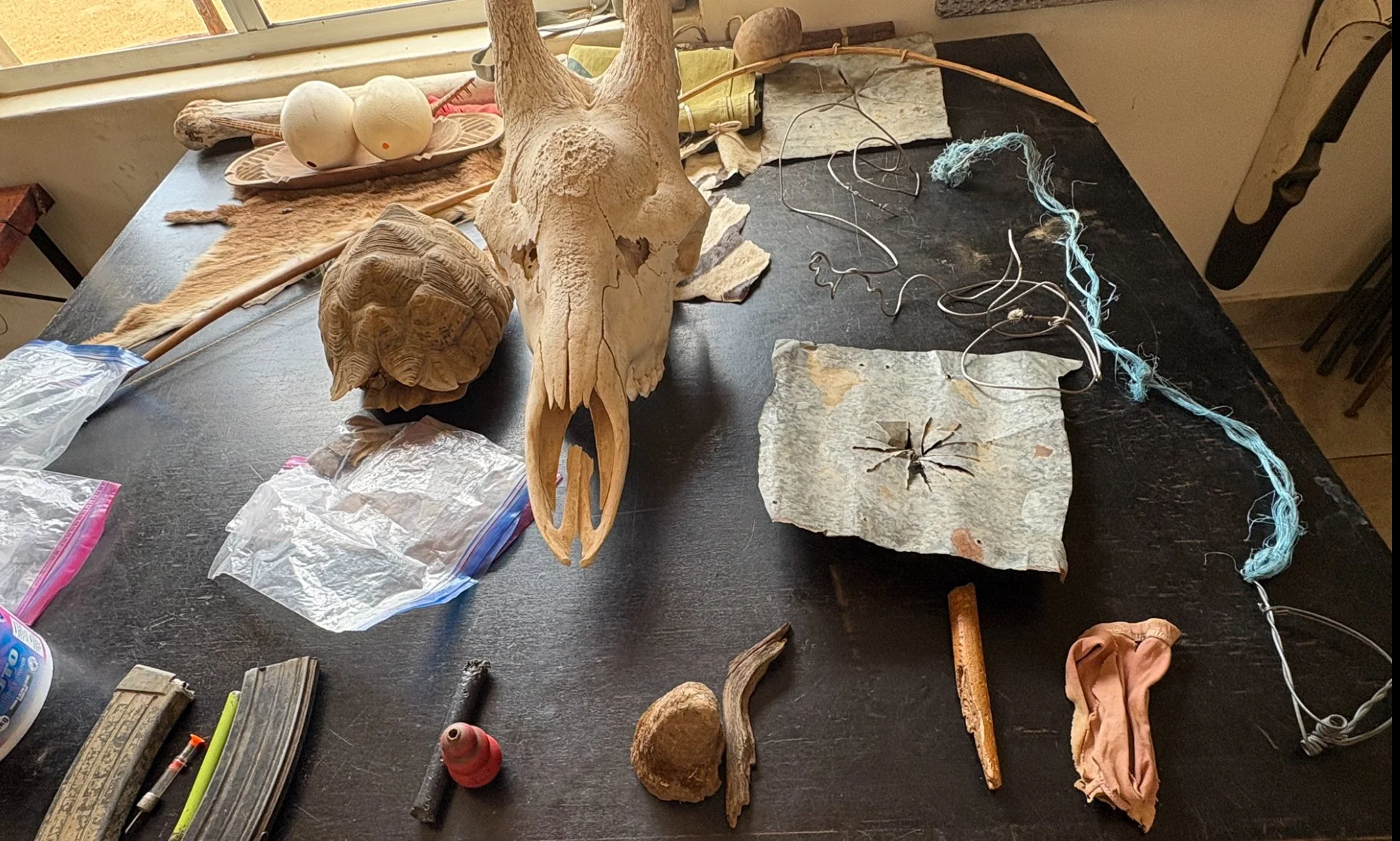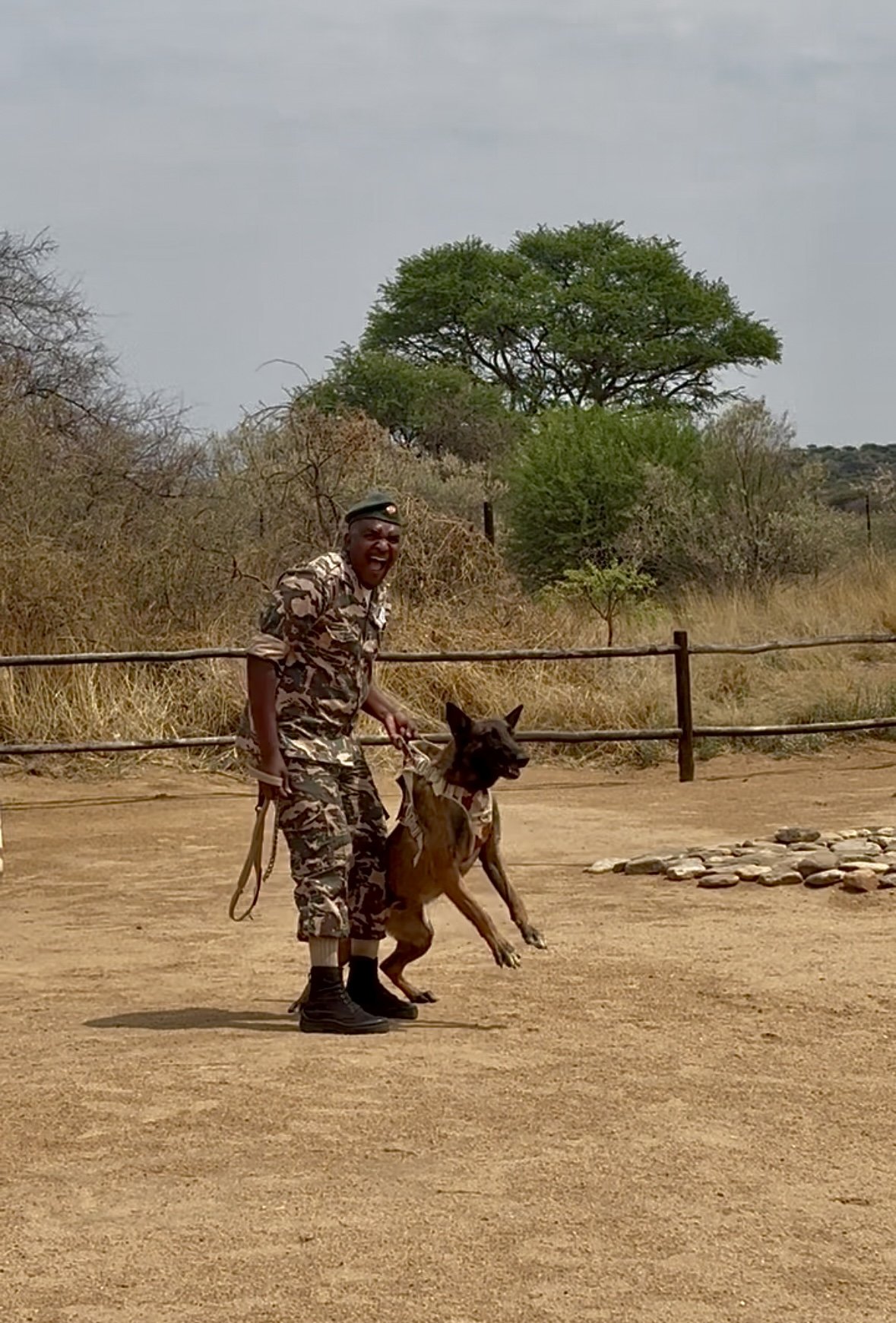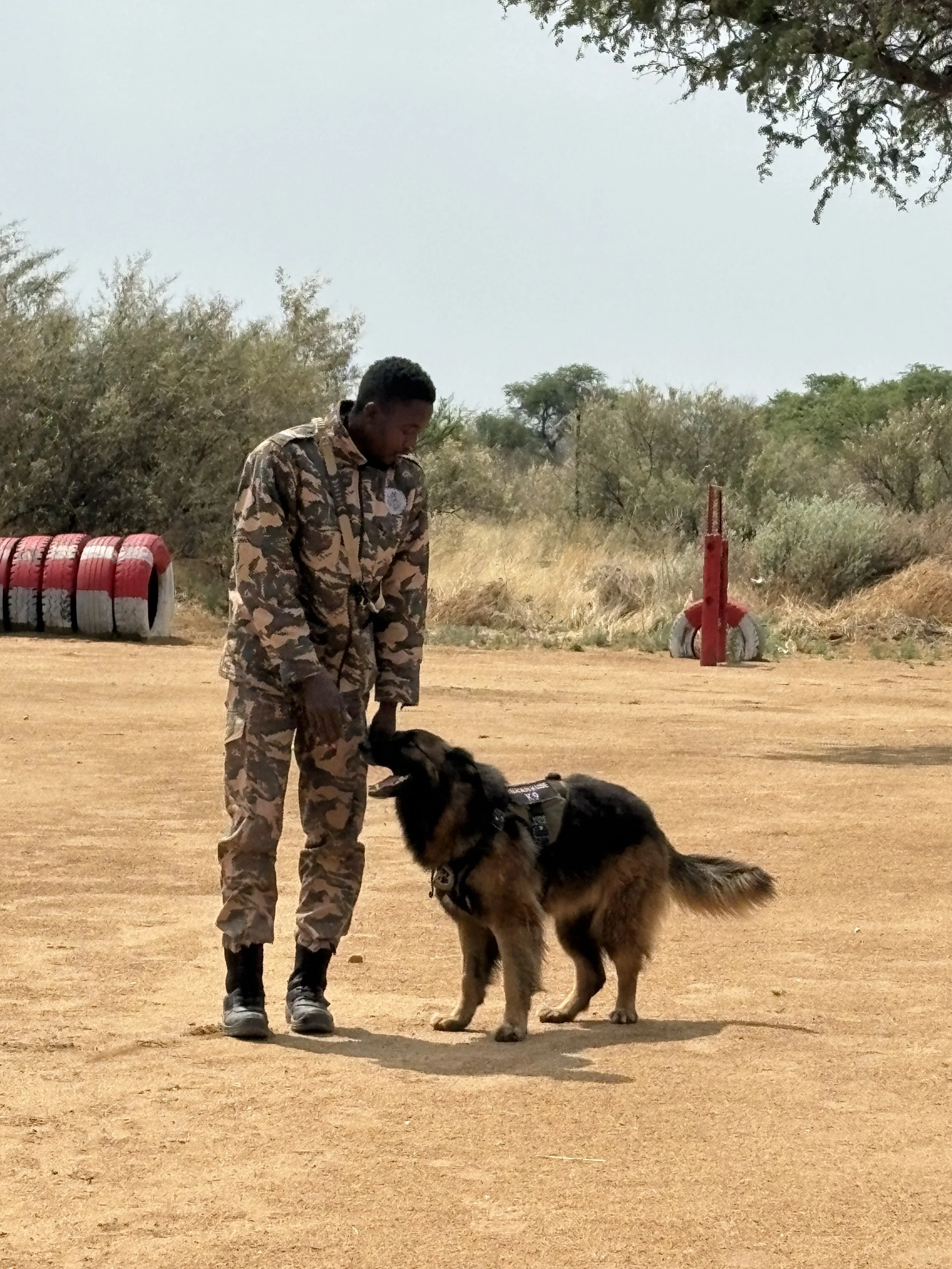Time with a K9 Anti-poaching unit
Image accessibility description: Two rhinos walk slowly through thorny bushes, their thick skin touching the branches. Dry leaves rustle and twigs snap under their steps as they disappear into the misty distance, leaving broken plants behind. Their dusty, strong shapes stand out against the bushes.
On the dusty road just as the sun began to rise, the further we drove the more the wilderness stretched out in front of us. It was approaching the end of the dry season; many of the Camelthorn and Acia trees looked like they had been dead for years and tall grasses yellowed and dried by the sun sprung out between the red earth. Reaching the gate of the reserve I was greeted by a man dressed in camouflage and holding a gun, a sign that the fight between poachers and protectors was as high octane as I’d been told. After we had been granted access, we drove another few minutes until we reached the training camp; the sound of dogs barking filled the dry air and I was excited to finally meet them.
Image accessibility description: a female ranger dressed in camouflage strokes a dog sitting at her side in the middle of a training arena filled with red and white obstacles and a building behind them
Poaching across the globe has directly led to the near extinction of many species and although protective measures have been implemented in many areas, the threat to wildlife remains high. There are different levels of poaching, some are just trying to find food to feed their families, while others are promised huge amounts of money for killing animals for their status or ‘medicinal’ properties. It is difficult to comprehend that one kilogram of rhino horn, which is structurally identical to our own fingernails, can reach a price of millions of dollars, but this is the reality in Namibia.
Image accessibility description: Items left by poachers including snare traps, animal bones and rhino horn, plastics and bullet casings all displayed on a dark wooden table.
The battle between poachers and rangers is ever evolving, each side constantly trying to gain the upper hand in the fight by bringing in new tactics, using new trapping methods and weapons to quietly bring down the animals whilst conservation workers employ new technologies, such as drones, to search for poachers on their land. This particular anti-poaching unit enlists the help of dogs to track and deter the poachers. Belgium Malinois and German Shepards are selected on account of their perceived breed characteristics including high work drive, size and intimidation, loyalty and scent tracking ability.
Image accessibility description: A ranger dressed in camouflage shouts orders, holding a tense attack dog by its harness. The dog's posture shows discipline, excitement and focus and the dog is ready to run towards it’s target.
Training of the puppies starts when they are three months old, and each ranger is responsible for their own dog. Like many good dog trainers, the power of play is instrumental in the programme the rangers use. Dogs learn best this way and the learning has been shown to be absorbed on a deeper level, leading to longevity of the cues so dogs will remember the task years later. The men and women who train these dogs form strong personal bonds with them and often when the dogs retire, around the age of eight, the rangers adopt them.
Most of the training focuses on the tracking of poachers and the equipment they use. The dogs learn to scent a range of materials from gunpowder and bullets to metal, plastics, rubber, cloth and even wood. The level of discrimination between smells is incredible, for example, it wouldn’t be much use in the bush if a dog signalled that every wooden log or branch was a threat, but the dogs learn the difference in smell between polished wood (like that you would find on a shotgun) and natural wood. This skill helps keep the dogs focused on their task and gives the anti-poaching unit an edge. By the time the dogs have finished their training programme they are capable of finding a single bullet in a 90m2 area even when buried deep under logs or tyres.
Image accessibility description: A ranger dressed in camouflage affectionately strokes the nose of a German Shepard dog who is wearing its canine patrol harness and wagging it's tail.
As the puppies mature they are also trained in both agility and ‘defensive’ or aggressive displays. These include barking and lunging at the perceived threat as well as bite and grab when instructed. It was a little chilling to watch in training when a Belgian Malinois (aptly called Ranger) leapt 6 feet into the air to latch onto the arm of one of the rangers who was pretending to be a poacher hiding in a tree and despite being suspended in mid-air didn’t let go of his arm until the handler called him off.
Image accessibility description: A man hiding up in a tree has his arm outstretched. He is wearing a bite proof sleeve to which a large brown dog is gripping onto with its jaws. The dog is suspended in the air.
The rangers and their dogs work eight hour shifts and there are at least three pairs out on patrol at any given time. One of the difficulties of training is in helping dogs to learn to discriminate between work and play. For these dogs, the harness that they wear can be used as an effective cue, but it is still the biggest training challenge they face, so we spent some time discussing other cues that could be used simultaneously. The rangers are now going to add verbal and hand signal cues which should help the dogs to know when they can switch off from ‘work mode’.
This brave K9 anti-poaching unit dedicate their lives to protecting species that are vitally important to our environment, they would prefer to remain anonymous but if you would like to donate to their cause please contact me and I can direct you to the best organisations.


